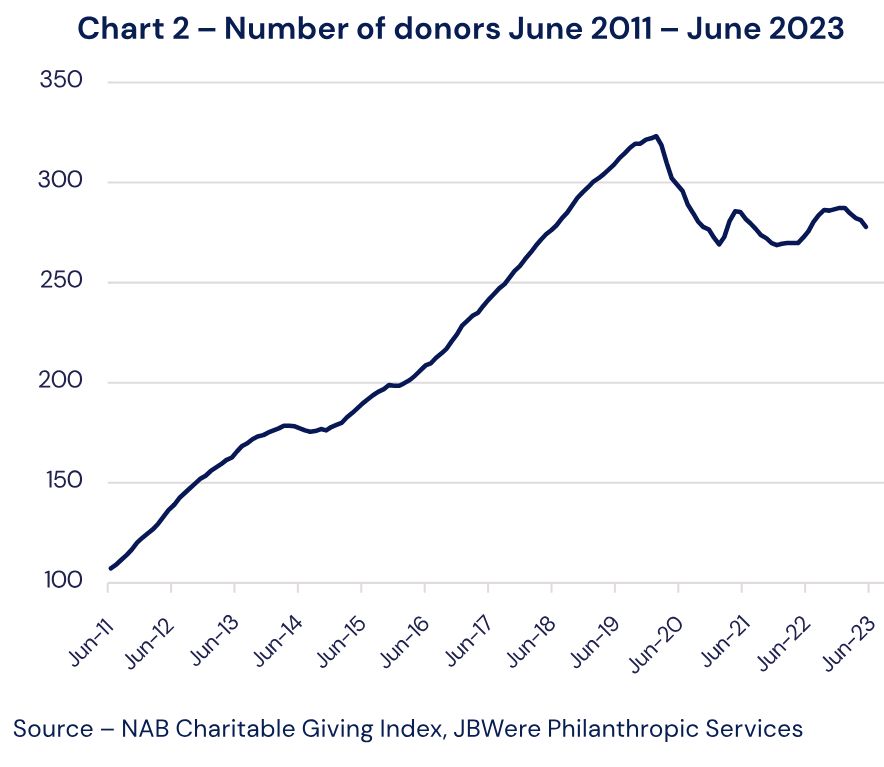Navigating the Winds of Fundraising in 2024/25
As Jimmy Dean aptly said, “I can’t change the direction of the wind, but I can adjust my sails to always reach my destination.” This especially rings true for fundraising today. While traditional methods may have yielded success in the past, adapting to the evolving donor landscape is crucial.
Winds of Change: Fewer Donors, Bigger Gifts
Data reveals a double-edged sword: giving is recovering from COVID-19 dips, but fewer individuals are contributing overall[1]. Mass-market donations (under $1,000) continue their decline, putting pressure on organisations built on this segment.

However, there are promising opportunities: larger donations are on the rise. High-net-worth individuals, private ancillary funds, trusts, and foundations are increasing their contributions. Additionally, the upcoming intergenerational wealth transfer, estimated at $3.5 trillion in Australia by 2050[2], presents a significant opportunity for gifts in wills.
Chartering a new course: Understanding New Donors
While focusing on “where the money is” makes sense, understanding how to engage these new donor segments is key. Here’s the breakdown:
- Mass Market Donors: Respond well to emotional appeals and tend to give one-off, smaller donations.
- Bequest Donors: These individuals need to understand an organisation’s impact and how their gifts in their will make a lasting difference.
- Major Donors: Often have a strong investment in the cause and organisation, frequently building relationships with key personnel in the not-for-profit.
Tailoring the message and approach
Each donor segment requires a unique approach. Mass-market interactions tend to be more transactional, but larger gifts typically involve building strong, personal relationships. In essence, it’s not just about funding organisations; it’s about people giving to people. This relationship-based approach can seem daunting for organisations used to mass-market fundraising.
Preparing for change
Remember, changing direction without a clear roadmap and sufficient resources can be disastrous. Skilled fundraisers build a solid foundation before adjusting their sails. This involves:
- Developing a comprehensive fundraising strategy: This strategy should consider the changing landscape and prioritise the most effective approaches for each donor segment.
- Allocating dedicated resources: Relationship building takes time and effort. Ensure you have the necessary personnel and resources to make and nurture these connections.
The Takeaway: Be a Canny Fundraiser
Successful fundraising in 2024/25 demands a keen awareness of the changing winds. By adapting your approach, building strong relationships with key donor segments, and implementing a clear strategy, you can navigate the ever-evolving fundraising landscape and reach your destination.
[1] https://www.jbwere.com.au/insights/news/2022/01/jbwere_nab_charitabl
[2] Productivity Commission, 2021